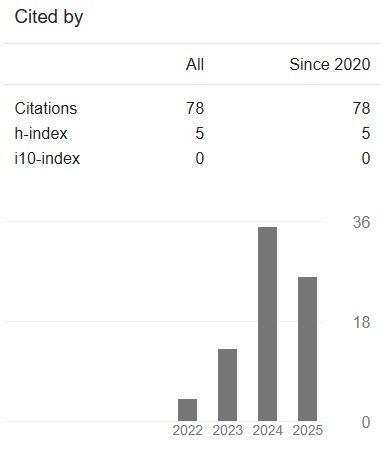Implementation of a damage calculation in a numerical wheel-rail contact simulation
DOI:
https://doi.org/10.24191/jaeds.v1i1.19Keywords:
RCF, FEA, wheel-rail contact, elastic-plastic materialAbstract
Railways can transport cargo and persons a great distance. The combination of high axle loads, and the rigid wheels and rails made of steel results in high stresses at the wheel-rail contact. These high stresses cause rolling contact fatigue. To prevent and to forecast the rolling contact fatigue, the knowledge of the stresses and their effect on the local damage are important. One possible way to achieve results of the stresses is based on a finite element analysis. The calculation of the rolling contact fatigue is conducted subsequently. This paper will present one possibility to implement the damage calculation into a finite element software and use the post-processing to enable a fast assessment of rolling contact fatigue on the surface and the adjacent volume of a rail.
Downloads
References
B. Hafner, Streckenklasse. [Online]. Available: https://blog.railcargo.com/de/artikel/eisenbahn-einfach-erklaert-interoperabilitaet/eisenbahn-einfach-erklaert-streckenklasse
E. Magel, P. Mutton, A. Ekberg, and A. Kapoor, “Rolling contact fatigue, wear and broken rail derailments,” Wear, 366-367, pp. 249–257, 2016, doi: 10.1016/j.wear.2016.06.009.
C. Jessop, J. Ahlström, L. Hammar, S. Fæster, and H. K. Danielsen, “3D characterization of rolling contact fatigue crack networks,” Wear, 366-367, pp. 392–400, 2016, doi: 10.1016/j.wear.2016.06.027.
S. Gu, X. Yang, S. Zhou, S. Lian, and Y. Zhou, “An innovative contact partition model for wheel/rail normal contact,” Wear, 366-367, pp. 38–48, 2016, doi: 10.1016/j.wear.2016.07.001.
I. Kaiser, “Hochdetaillierte Modellierung der Fahrzeug-Fahrweg-Wechselwirkung,”
M. Toumi, H. Chollet, and H. Yin, “Finite element analysis of the frictional wheel-rail rolling contact using explicit and implicit methods,” Wear, 366-367, pp. 157–166, 2016, doi: 10.1016/j.wear.2016.06.008.
L. Reis, B. Li, and M. de Freitas, “A multiaxial fatigue approach to Rolling Contact Fatigue in railways,” International Journal of Fatigue, vol. 67, pp. 191–202, 2014, doi: 10.1016/j.ijfatigue.2014.02.001.
G. Trummer, C. Marte, S. Scheriau, P. Dietmaier, C. Sommitsch, and K. Six, “Modeling wear and rolling contact fatigue: Parametric study and experimental results,” Wear, 366-367, pp. 71–77, 2016, doi: 10.1016/j.wear.2016.04.024.
Technische Universität Graz, RSS-Rail System Security. [Online]. Available: https://graz.pure.elsevier.com/de/projects/rss-rail-system-securi-rss-rail-system-security (accessed: May 27 2021).
B. Lichtberger, Handbuch Gleis: Unterbau, Oberbau, Instandhaltung, Wirtschaftlichkeit, 3rd ed. Hamburg: Eurailpress DVV Media Group, 2010.
M. A. Miner, “Cumulative Damage in Fatigue,” J. Appl. Mech, vol. 12, no. 3, A159-A164, 1945, doi: 10.1115/1.4009458.
E. Haibach, Betriebsfestigkeit: Verfahren und Daten zur Bauteilberechnung, 3rd ed. Berlin: Springer, 2006.
S. Korkmaz, “Extension of the Uniform Material Law for High Strength Steels,” Master Thesis, Bauhaus University, 2008.
V. Kulkarni, Marc Volume D: User Subroutines and Special Routines - 2020 FP1, 2020.
D. Benoît, B. Salima, and R. Marion, “Multiscale characterization of head check initiation on rails under rolling contact fatigue: Mechanical and microstructure analysis,” Wear, 366-367, pp. 383–391, 2016, doi: 10.1016/j.wear.2016.06.019.
R. Lewis, U. Olofsson, J. E. Garnham, and S. Grassie, Eds., Wheel–rail interface handbook, 2009.
S. Kaewunruen, M. Ishida, and S. Marich, “Dynamic Wheel–Rail Interaction Over Rail Squat Defects,” Acoust Aust, vol. 43, no. 1, pp. 97–107, 2015, doi: 10.1007/s40857-014-0001-4.
UIC Code 712 // Schienenfehler: Défauts de rails = Rail defects, 4th ed. Paris: UIC, 2002.
W. Schoch, Rollkontaktermüdung Ein Überblick Über Ein Weltweites Phänomen. [Online]. Available: http://www.dgzfp.de/portals/eisenbahn2014/BB/3.pdf
E. E. Magel, Sawley Kevin J., P. S. Sroba, and J. Kalousek, “A Practical Approach to Controlling Rolling Contact Fatigue in Ralways,” in 8th International Heavy Haul Conference, pp. 447–455.
Y. Wang and L. Susmel, “Critical plane approach to multiaxial variable amplitude fatigue loading,” Frattura ed Integrità Strutturale, vol. 9, no. 33, pp. 345–356, 2015, doi: 10.3221/IGF-ESIS.33.38.
J. LeMaitre, Ed., Handbook of materials behavior models. San Diego: Academic Press, 2001.
Downloads
Published
How to Cite
Issue
Section
License
Copyright (c) 2021 Christian Buzzi

This work is licensed under a Creative Commons Attribution 4.0 International License.









